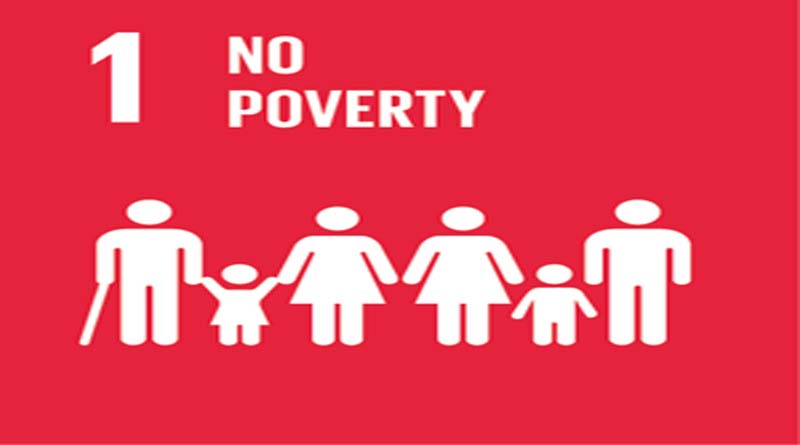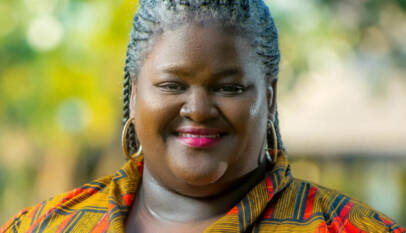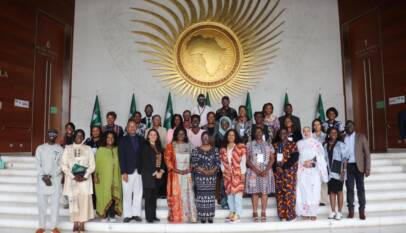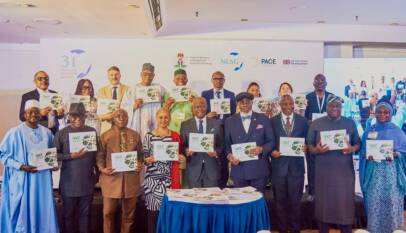OP-ED: Obsession with ending poverty is where development is going wrong, By Efosa Ojomo

How can we alleviate extreme poverty? It’s the question that underpins the UN sustainable development goals (SDGs), and almost all development projects.
Because poverty almost always shows itself as a lack of resources in poor communities – food, safe water, sanitation, education, healthcare – it’s reasonable to theorise that poverty is a resource problem. So, based on that assumption, we execute a push strategy of development – pushing the resources poor communities lack in order to solve the issue. But while we might alleviate poverty, we don’t do much else.
Our strategies will not create sustained growth that leads to prosperity because we are solving the wrong problem.
Consider this example. To achieve SDG 6 – ensure water and sanitation for all – the Indian government in 2014 created the Clean India campaign, committing to provide toilets to more than 60m Indian households by 2019. More than two years and over 10m toilets later, India’s government is finding many Indians are not using the toilets and is now considering paying people to do so. The government’s assessment suggested a lack of toilets was the problem, leading to a push strategy – which is failing.
Here’s another example. As a result of SDG 4 – ensure quality education for all – primary schools are being pushed onto the poorest countries with marginal developmental impact. In 1900, when America had a GDP per capita of more than $4,000, much more than many of the world’s poorest countries today, only 50% of 5-19 year olds were enrolled in school.
Development practitioners today must ask themselves, “How much value is there in pushing universal education in a poor country where a majority of the youth are unemployed?” or “What is the incremental value of teaching a five-year-old to read in a country where millions of 25-year-olds are out of work?” Should development organisations not focus more of their efforts on the potentially more dangerous and volatile 25-year-olds than on the innocent five year olds? I for one, have never met a dangerous five-year-old.
But one might rightly ask, what about the moral imperative to educate children and the long-term gains a country might experience as a result? Those are valid concerns. But those concerns aren’t considering the following. First, when adults have access to gainful employment, they are likely to send their children to much better schools than many of the free public schools in poor countries.
Second, as Harvard University professor, Lant Pritchett notes in his book, The Rebirth of Education, in many poor countries, children are attending school, but are not learning. In India, for instance, less than half of the fifth grade students surveyed could not read a simple story and only slightly more than half could do subtraction. In Tanzania, over 65% of students who sat for the 2012 examination for secondary school failed.
Third, even if the schools were providing excellent education, the long-term gains from early childhood education is limited when those children are immersed in a society that is unable to absorb the value of the education. In other words, what does a child do after receiving an excellent primary school education and cannot afford the cost of secondary school?
This does not mean that we stop these programmes altogether, but rather that we complement them with programmes that ensure their sustainability.
But, because the fundamental question that guides our theory and strategy focuses on poverty alleviation, these interventions (toilets, free universal education) by themselves seem reasonable. However, by asking a different question, development practitioners can derive entirely new theories that will ultimately lead to a very different development strategy.
How can we create prosperity?
The eradication of poverty is not the same as the creation of prosperity. Development practitioners should focus on the latter. Simply owning a toilet, even when it is used, does not equate to living a prosperous life. Similarly, having your child attend primary school when your household still lives on less than $10 a day does not exemplify prosperity. The theory that poverty is a resource problem cannot answer both questions. In fact, creating prosperity is a process problem, not a resource problem.
A process is the way people use their resources. For example, if I had $100 (a resource) and I chose to purchase alcohol to feed my habit (a process), the impact of that resource on my life would be vastly different than if I chose to invest it in starting a small business. Same resource, different processes, different impact. In order to create prosperity, development practitioners and programmes such as the SDGs must focus on fostering processes.
This focus on processes leads to developing innovations that people can pull into their lives to help them make progress. Consider how the Kenyan mobile money platform M-Pesa came to dominate cash transfers in the country. In Kenya, it took more than 100 years to establish a network of 1,045 bank branches and 1,500 ATMs. But soon after M-Pesa was released, the process of money transactions in Kenyachanged drastically. More than 19 million Kenyans pulled M-Pesa into their lives because it was a significantly better way for them to transact.
If the founders of M-Pesa had framed the problem in Kenya as a resource problem, they would have built significantly more banks and ATMs. This would have had less impact on mobile money transactions in Kenya. Unfortunately, many of the SDGs are pushing resources anchored in the wrong question.
Instead of pushing many of the SDGs, what might it look like if the UN actually set up an innovation group that developed products, such as M-Pesa, that people could pull into their lives? The UN Global Pulse Labs is an interesting attempt, but the initiative is still too focused and prioritises what experts determine are the needs as opposed to entrepreneurs.
What might happen if the SDGs, and the whole development community stopped treating development as a resource problem and began treating it as the process problem it is. And most importantly, how might the development community be transformed if we simply asked – how can we best create prosperity in poor countries?
Efosa Ojomo is a research fellow at the Clayton Christensen Institute for Disruptive Innovation. Follow @EfosaOjomo on Twitter. The views expressed in this article are the author’s own and do not necessarily reflect African Newspage’s editorial policy.
Source: Global Development













